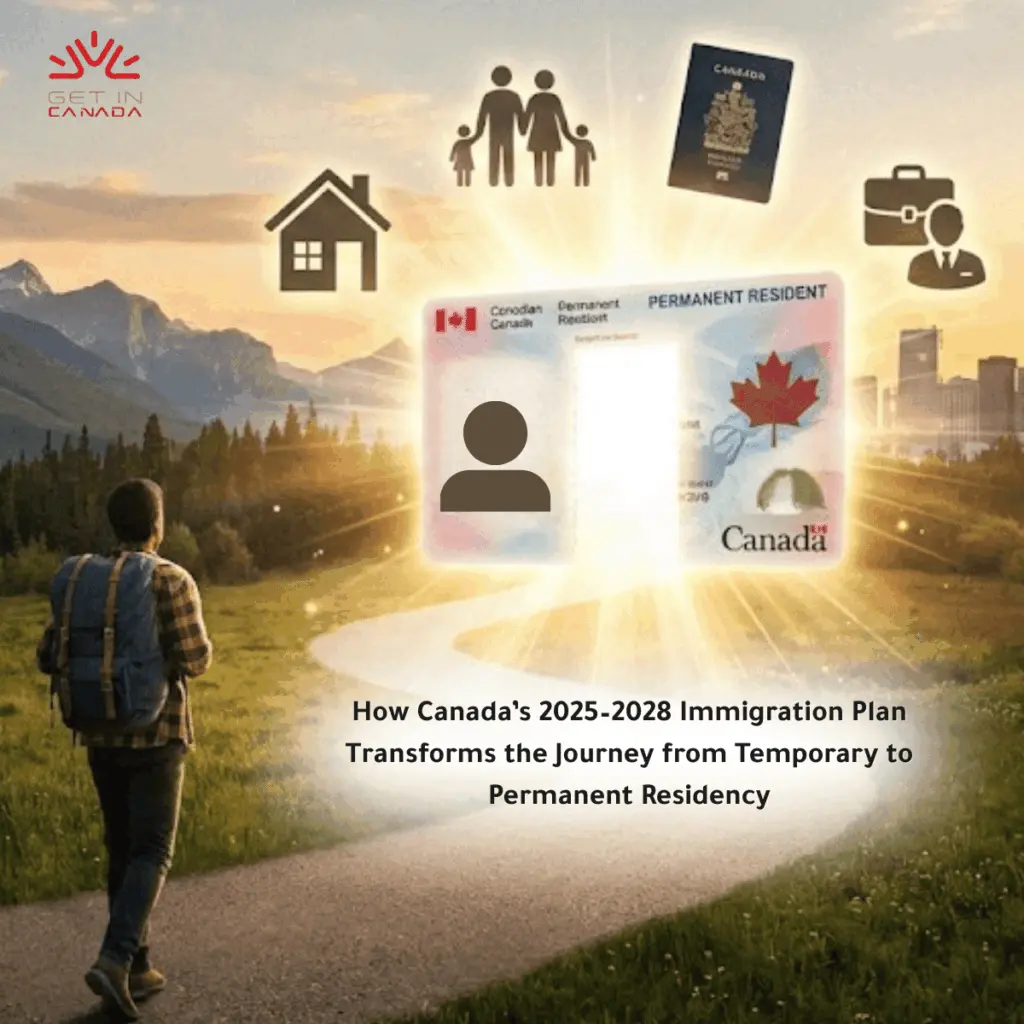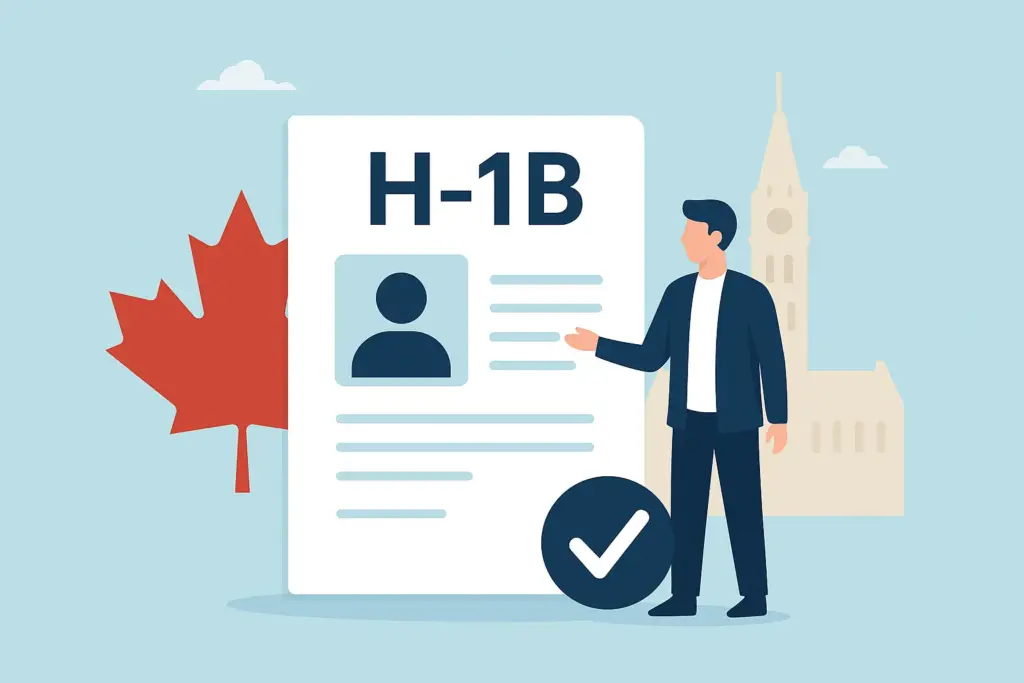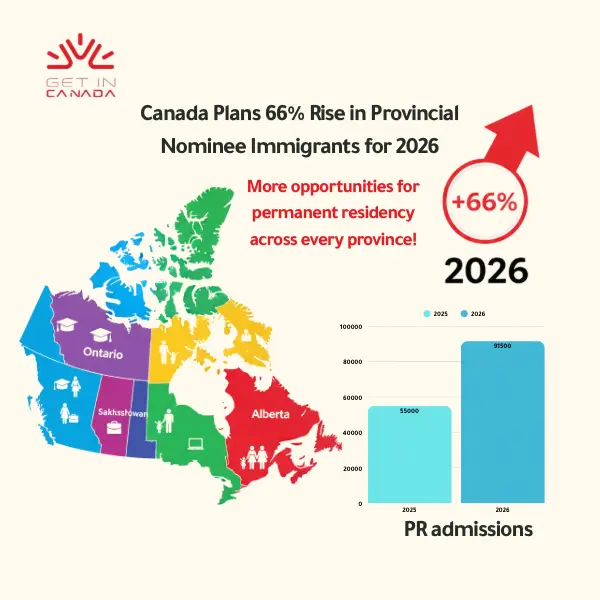How to Get in Canada as a Tech Worker 2025

Introduction
The world is racing toward digital transformation, and Canada has positioned itself as one of the most welcoming destinations for global tech talent. From artificial intelligence hubs in Toronto to gaming companies in Vancouver, Canada’s tech sector is booming, and the demand for skilled workers has never been higher.
In this 2025 guide, we’ll explore how tech professionals can study, work, and finally settle in Canada. You’ll also discover visa programs, work permits, and permanent residency options tailored for those in the tech industry.
Read also: Study, Work, and Immigrate to Canada
1. Why Canada Needs Tech Workers
Canada’s economy is shifting toward innovation. With thousands of unfilled positions in IT, software development, cybersecurity, and data science, the federal and provincial governments have made it easier for tech workers to immigrate.
Major companies like Shopify, Google Canada, and Ubisoft are expanding their teams, often recruiting globally to fill skill gaps.
Read also: Top 10 Jobs In-Demand in Toronto in Future 2025
Find out if you are eligible to get in Canada →
2. Work Permit for Tech Workers in Canada
To work legally in Canada, most tech professionals start with a work permit. The most common options are:
- Employer-Specific Work Permit: issued for a specific employer under programs like the Global Talent Stream.
- Open Work Permit: allows flexibility to work for any employer.
- Post-Graduation Work Permit (PGWP): available for international graduates of Canadian institutions.
Average Work Permit Processing Time: 2–10 weeks, depending on the program and country of residence.
External Resource: IRCC Work Permit Application
3. The Global Talent Stream and Tech Talent Pathway
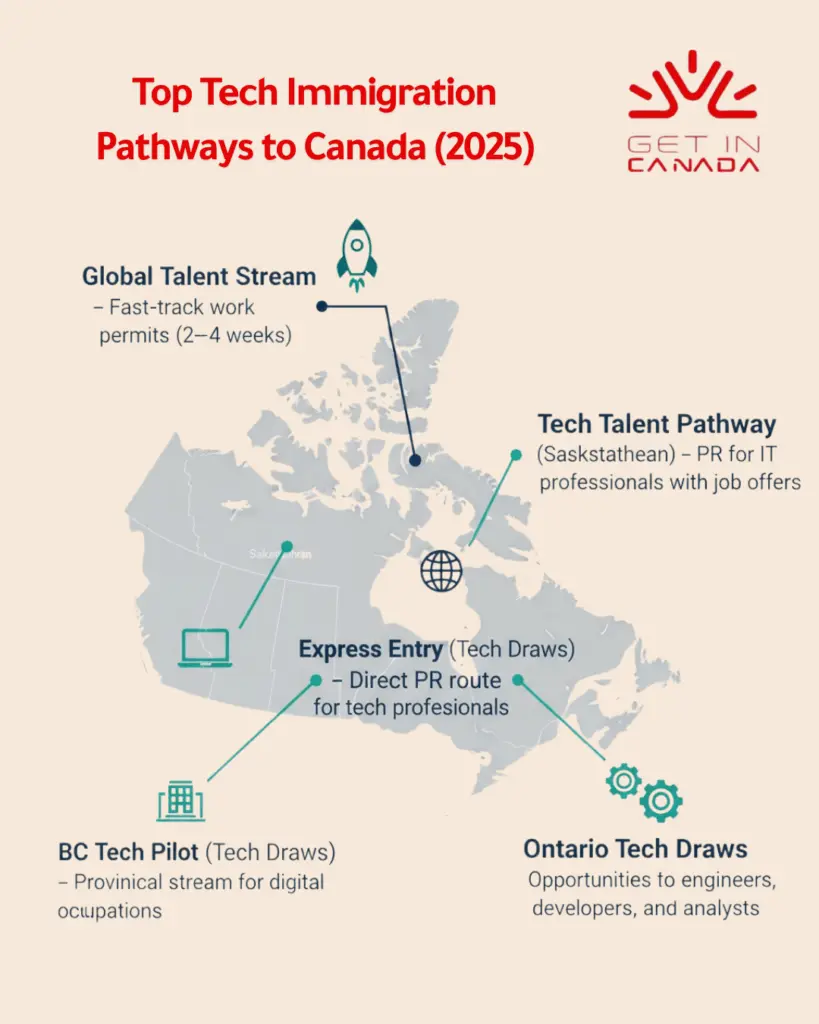
The Global Talent Stream (GTS) is one of the fastest ways for tech professionals to come to Canada. Employers can bring in highly skilled workers within two to four weeks.
Meanwhile, the Saskatchewan Tech Talent Pathway targets professionals with experience in IT, software engineering, and computer science who have a job offer from an eligible employer.
| Program | Target Audience | Processing Time | Key Benefit |
|---|---|---|---|
| Global Talent Stream | Skilled tech workers with job offers | 2–4 weeks | Fast-track work permit |
| Tech Talent Pathway (Saskatchewan) | Experienced IT professionals | 2–3 months | PR pathway with employer support |
| Express Entry (Tech Draws) | Tech professionals in demand occupations | ~6 months | Direct route to Permanent Residency |
Read also: Saskatchewan Immigrant Nominee Program
4. Express Entry for Tech Professionals
The Express Entry system remains Canada’s most popular pathway for skilled tech workers. Applicants are ranked using the Comprehensive Ranking System (CRS), points are awarded based on education, experience, age, and English/French proficiency.
Tech workers often score high due to in-demand skills and Canadian work or study experience.
5. Permanent Residency Options for Tech Workers
Once you’ve gained Canadian work experience, you can apply for Permanent Residency (PR) through programs such as:
- Canadian Experience Class (CEC) under Express Entry.
- Provincial Nominee Programs (PNPs) with tech-specific streams.
- Atlantic Immigration Program (AIP) for tech professionals in Eastern Canada.
Permanent residency allows you to live, work, and access social benefits just like citizens.
6. Renewing Your Work or PR Card
Tech workers often transition from temporary to permanent status. If your work permit or PR card is expiring, you can renew it online via the IRCC portal.
- Work Permit Renewal: Submit before expiration to maintain status.
- PR Card Renewal: Recommended every 5 years.
- Processing Time: Usually 2–6 months.
7. Tips for a Successful Tech Immigration Journey
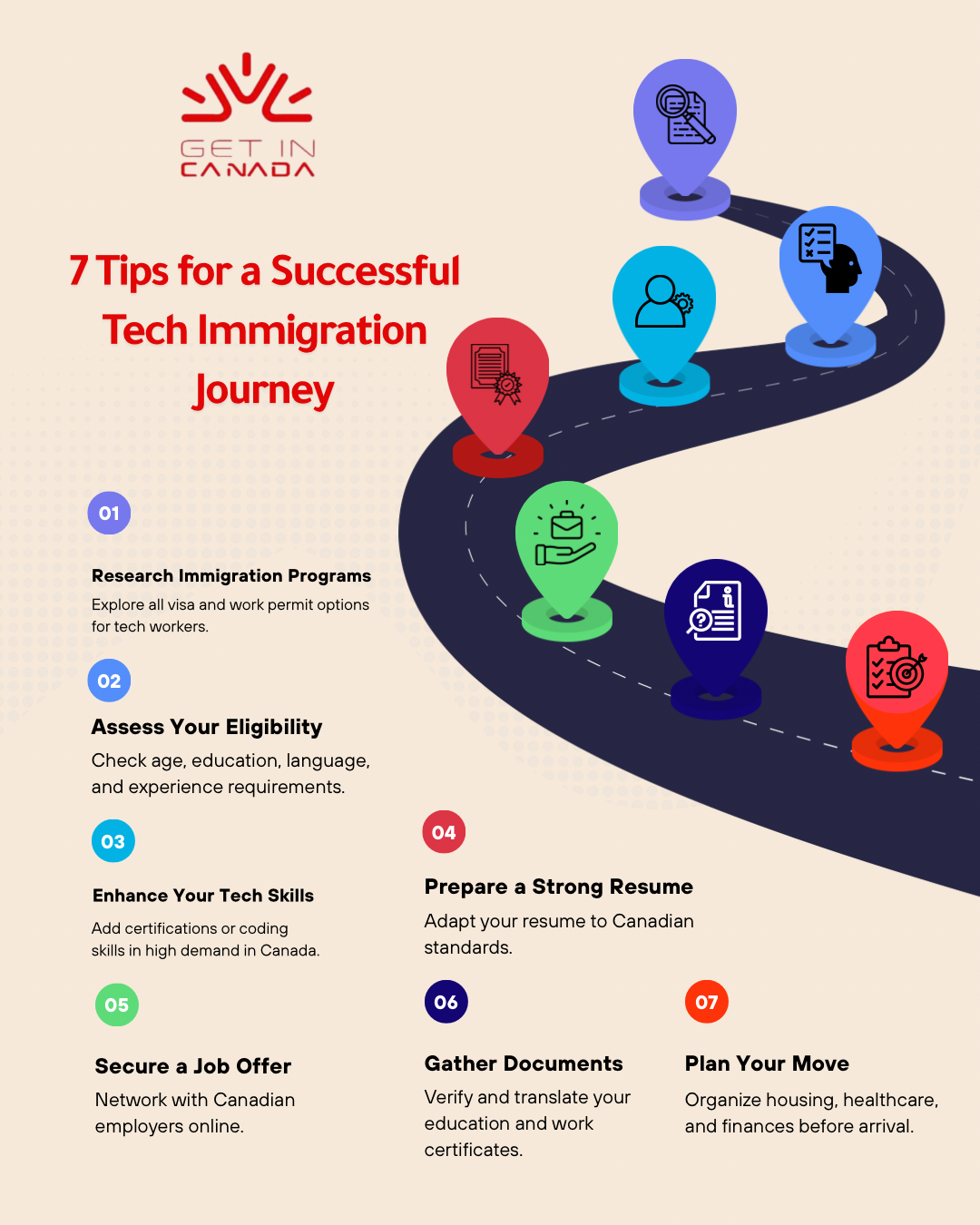
To maximize your chances of success when immigrating to Canada as a tech professional, careful preparation and strategic planning are key. The following tips can help you navigate the process smoothly and stand out as a strong candidate.
- Strengthen your language proficiency (IELTS/TEF).
- Gain Canadian education or work experience.
- Network through LinkedIn and job fairs.
- Use a licensed immigration consultant to guide your process.
Conclusion
The path to Canada for tech professionals has never been more promising. As global demand for innovation continues to rise, Canada stands out as a destination that not only values digital expertise but actively invests in it. Whether through the Global Talent Stream, a Provincial Nominee Program, or Express Entry, the country offers multiple clear and supportive pathways for skilled workers ready to bring fresh ideas and technological growth.
Across major cities like Toronto, Vancouver, and Montreal, Canada’s tech scene is thriving, powered by startups, research labs, and forward-thinking companies that welcome international talent. By 2025, your skills could open the door to more than just a new job; they could help you build a fulfilling life in a country known for its inclusivity, stability, and innovation-driven future.



